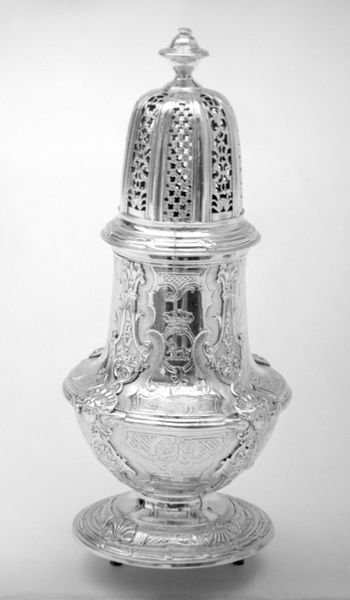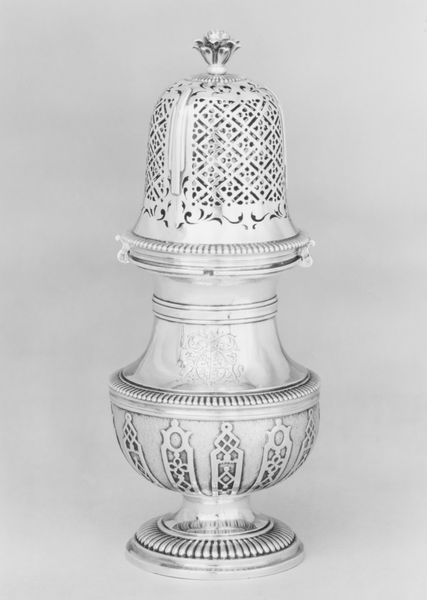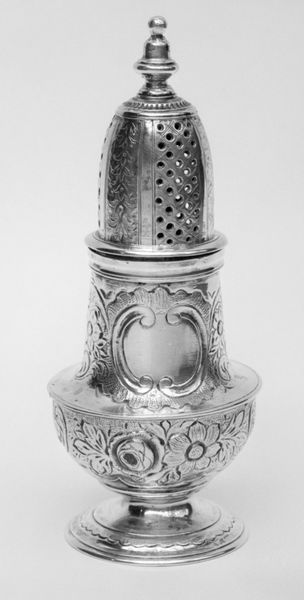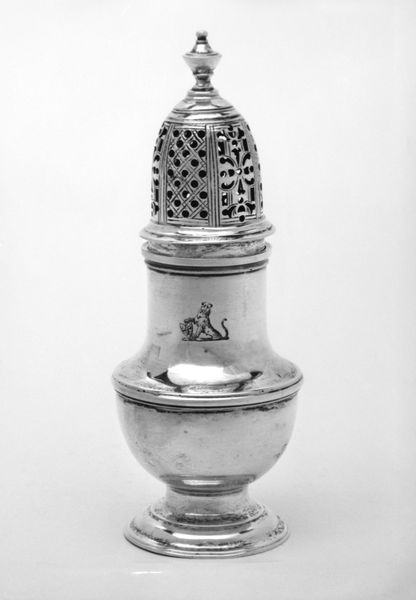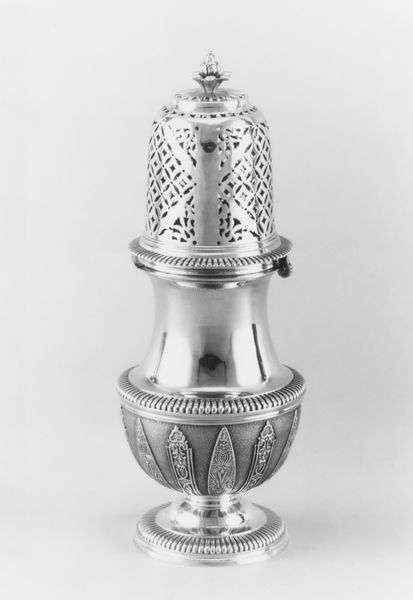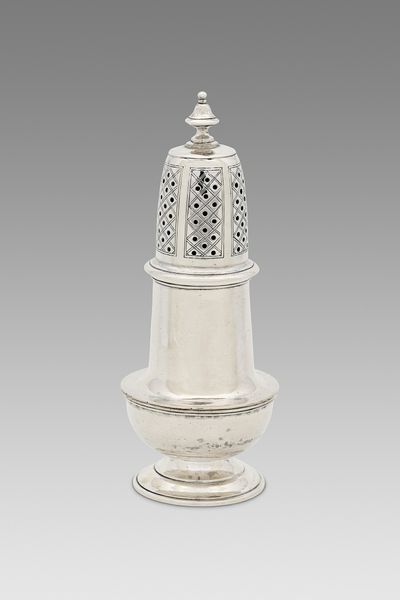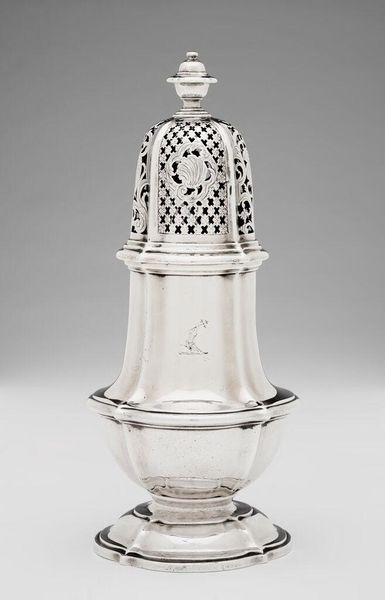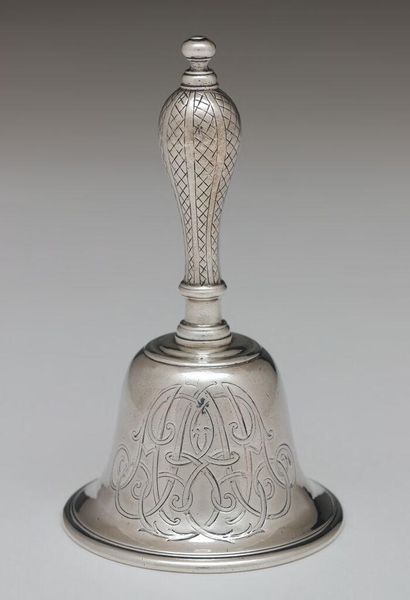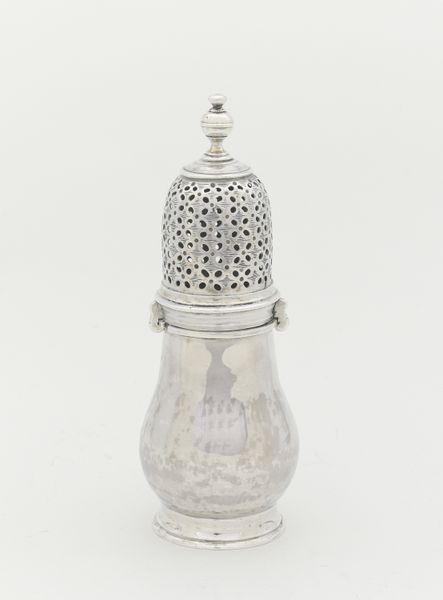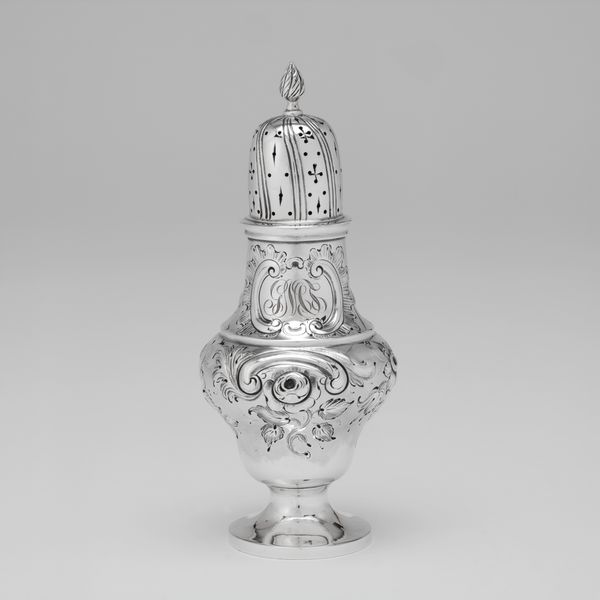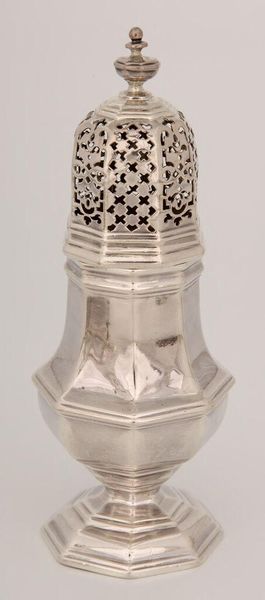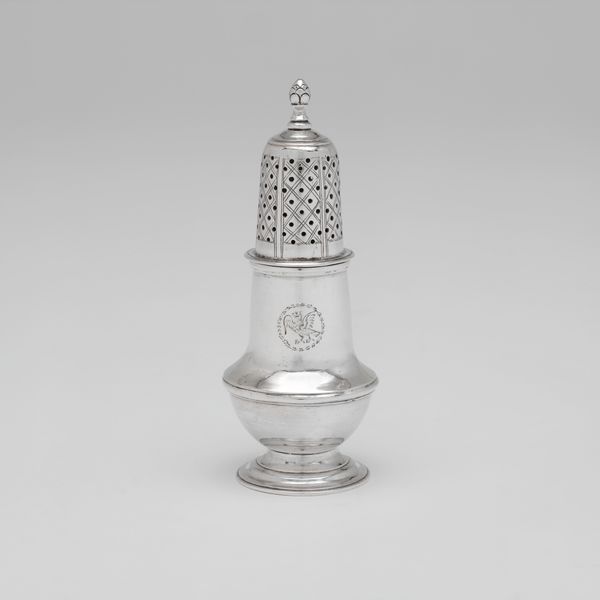
silver, metal, sculpture
#
silver
#
baroque
#
metal
#
sculpture
#
decorative-art
Dimensions: Height: 8 1/4 in. (21 cm)
Copyright: Public Domain
Curator: Here we have a piece called "Caster" created between 1714 and 1715 by John Chartier. It’s currently part of the collection here at the Metropolitan Museum of Art. It is made from silver and represents a beautiful example of Baroque decorative art. What are your initial thoughts on it? Editor: My first thought is how much the luxury of this piece conceals. The polished silver, the intricate latticework—it all screams opulence. But then I think about the labor and social inequality it represents. Curator: Absolutely. Silver pieces like this caster, used for sprinkling sugar, weren’t just functional. They signaled wealth and status in a very stratified society. We're looking at more than a mere table object; it’s a reflection of social hierarchy. The Baroque style emphasizes grandeur and detail, a testament to the owner’s taste and resources. Editor: And that very consumption of sugar connects to some ugly histories, doesn't it? The production of sugar involved exploited labor. So a piece like this speaks volumes about the structures of power during that time. Curator: Precisely. While Chartier's craftsmanship is remarkable, using traditional metalworking techniques, understanding its context means grappling with this complex history of trade, colonialism, and the commodification of taste. Editor: The clean lines on the hexagonal base give a geometric balance against the organic motifs, don't you think? How intentional the design seems! Curator: It is a careful blend of geometrical structure and natural ornamentation characteristic of the Baroque. Every facet and flourish was consciously designed to project power. Editor: This brings up questions about display in the museum space itself. How does exhibiting items divorced from that context shape how the public understands their significance? Curator: Museums serve a role to illuminate those historical narratives through considered curatorial choices and supplemental educational materials that offer deeper insights into objects like the caster. Editor: Well, this has certainly opened my eyes. It goes far beyond aesthetics. Curator: Indeed. "Caster" provides much food for thought about artistry, historical inequality, and the continuing function of cultural institutions in understanding these layers of meaning.
Comments
No comments
Be the first to comment and join the conversation on the ultimate creative platform.
